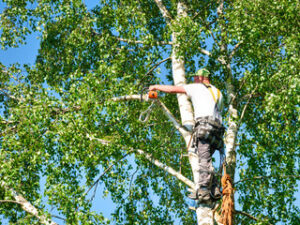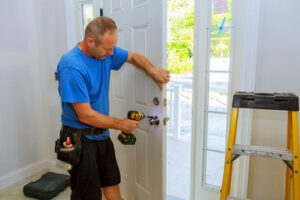Columbia MO Pest Control is a complex, ongoing process that requires regular monitoring and treatment of weeds, insects, fungi, rodents, and birds. It involves achieving thresholds and using integrated pest management techniques that minimize the use of chemical products.
There are three goals in pest control: prevention, suppression, and eradication. Preventing a pest problem is the best goal. This involves removing food, water, and shelter that attract pests.

Pest identification is the first step to successful pest control. It is the process of determining what species are present and the characteristics distinguishing them from similar species. Identifying pests correctly is important because different species have different damage patterns and require different treatment methods. Proper identification also helps you to choose the most appropriate and effective integrated pest management strategies. Incorrect identification could result in using inappropriate chemical treatments that are ineffective, waste money, and may increase pollution.
In order to successfully identify a pest, consider the pest’s shape, size and color, how it moves, its behavior, damage caused by the pest (e.g., droppings), and where it is found. Also note the time of year, habitat requirements, life cycle and reproductive habits.
A good place to start is to look for visual markers, such as droppings, egg masses, and smudge marks on surfaces where the pest has been. You should also check for entry points into your building. These include cracks, crevices and openings around windows, doors, vents and other areas that allow pests to enter. Rodents often leave pellet-shaped droppings, while cockroaches and termites produce dark-colored droppings that resemble coffee grounds.
For insect pests, identification is even more critical. It is important to know what species are present because different insect pests have specific damage patterns and respond differently to pesticides. Depending on the pest, it is essential to know what kind of damage they cause, and when they are most active. This information will help you to determine whether or not a pesticide is necessary and if so, which one to use.
Having an excellent knowledge of insect taxonomy will assist you in the proper identification of pests as well as beneficial insects. For example, it is helpful to learn about the insect orders, host plant preferences, and breeding habits of insects in order to correctly identify them for crop scouting and to make preventative pest control decisions. You should also start a file of labelled digital images of sampled insects by year, season and crop to serve as a reference for future pest identifications.
Pest Prevention
Even the best-maintained buildings can fall victim to pest infestations. An infestation describes the presence of any species in numbers that may cause damage, interfere with normal operations, or pose health and safety concerns for building occupants. Common pests include rodents (e.g., black and brown rats and mice), crawling insects (e.g., cockroaches, ants, beetles), flying insects (e.g., houseflies, blowflies, fermentation flies, moths, bees and wasps), and birds (e.g., pigeons and seagulls).
In outdoor environments, the primary goal of pest control is prevention. However, once a pest population has become established and is damaging property or posing a threat to human health, the objective of pest management becomes suppression and, in some cases, eradication.
Preventing pest infestations involves implementing an integrated pest management (IPM) program that includes cleaning and sanitation, sealing entry points, managing moisture levels, outdoor maintenance, routine inspections, and, when necessary, the use of chemical controls. IPM is a holistic approach to pest management that takes into account the entire ecosystem in which pests occur, and seeks to reduce pest populations to acceptable levels without causing unacceptable harm to humans or non-target organisms.
A key to preventive measures is establishing a regular cleaning schedule that includes vacuuming floors, wiping down surfaces, and emptying trash cans on a frequent basis. Keeping clutter and food scraps to a minimum will also help deter pests. Trash should be disposed of promptly, and storage containers should have tight-fitting lids to help avoid pest entry.
Moisture levels can also be managed by regularly inspecting plumbing and fixtures for leaks, as well as addressing any standing water on the property. Maintaining proper landscaping, storing firewood away from the home, and maintaining a well-manicured lawn will also discourage some pests.
Routine inspections of the exterior of the building are another important aspect of pest prevention, as is repairing any screens that have holes or tears. In addition, it is a good idea to inspect chimneys and other vents on a regular basis for signs of pest activity. Finally, it is wise to use caulk and weatherstripping around doors and windows to help seal off entry points.
Pesticides
Pesticides are powerful tools that can control many common household pests, but they are most effective when used in combination with other methods. Before using any chemical pesticide, make sure you understand the dangers involved and how to properly use them. Choose a product that is appropriate for the type of pest you are trying to control, and follow the label instructions for application and safety warnings.
Keep children and pets away from areas where pesticides are being applied. Be especially careful when applying surface sprays or foggers. These chemicals are more likely to get into the eyes and mouth than baits or traps, and can be irritating if they come into contact with skin. Be sure to wear personal protective equipment as specified on the pesticide label when mixing and applying pesticides. Always apply pesticides in well-ventilated areas.
Most chemical pesticides are toxic to humans as well as insects and other pests. They may affect the brain and nervous system of humans, causing a variety of symptoms, from nausea to neurological damage. They can also be absorbed through the skin, resulting in rashes and other health problems. Some pesticides (such as insecticides and herbicides) have acute effects, while others have chronic effects (such as hormone disruption or cancer).
Even when you take precautions to protect yourself, the environment, and other people, accidents do happen. If a person is accidentally exposed to an unsafe level of pesticide, it can be fatal.
Exposure hazards are greater when working with liquid sprays or foams in confined areas, such as attics or crawl spaces. It is important to increase ventilation by opening windows, using a fan, and wearing a respirator designed for the specific pesticide you are working with. Wear rubber or plastic gloves when handling pesticides, and be sure to wash your hands when you’re finished. Wash clothes you’ve worn during application immediately afterward with hot, soapy water. Thoroughly wash kitchen benches, countertops and other surfaces that normally come into direct contact with food.
If any family members become ill after you have used a chemical pesticide, call a poison control centre or your doctor. Be sure to have the name and number of the pesticide you used available for the doctor or poison control centre staff.
Prevention Tips
The best way to control pests is to keep them away from your home in the first place. Pests cause more than just annoyance; they can chew on electrical wires, damage drywall and leave droppings throughout your home. They can also carry diseases, such as salmonella and hantavirus. They can contaminate stored food and trigger allergies, such as asthma in children.
Preventing pests involves removing the food, water, and shelter they need to survive. Make sure to regularly clean kitchen counters and dispose of garbage in sealed containers. Store firewood away from your house and regularly sanitize outdoor trash receptacles. Keep bushes and other plants trimmed so they don’t provide hiding places for rodents. And don’t forget to screen attic vents and openings to chimneys.
Pests can squeeze through a crack the size of a pencil, so be sure to seal any cracks or crevices on your property’s exterior. Use caulk and steel wool, especially around utility pipes entering your house. And don’t forget the smallest entrance points, like the tiny cracks under doors and in between cabinetry. These can be used by ants, mice, cockroaches and bed bugs.
You should also take steps to protect your home from pests that can enter through open windows and doors. Keep doors and windows closed as much as possible, especially during the evening when nocturnal pests are most active. In addition, you should replace weather stripping and repair any door sweeps that are torn.
Using Integrated Pest Management (IPM) techniques is a great way to prevent pest infestations without the use of chemical pesticides. IPM is a method of controlling pests by combining methods, such as physical, mechanical and biological controls, to achieve the desired result. This is a more environmentally friendly approach to pest control, and it can be effective in many situations.
While some household pests are dangerous to your health and can damage your home, others, such as ladybugs, green lacewings, ground beetles and bats, are actually beneficial. So don’t be afraid to introduce them to your yard, as long as they are not harmful.








